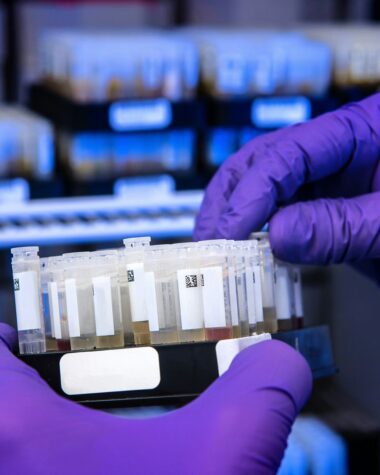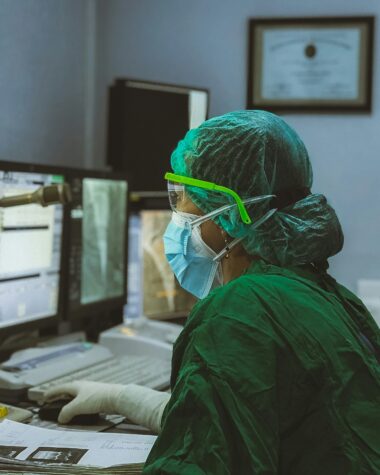Replimune Group, Inc. (NASDAQ:REPL) is a biotechnology company pioneering a transformative class of cancer therapeutics based on its proprietary Immulytic™ platform. Founded in 2015 and headquartered in Woburn, Massachusetts, Replimune is at the forefront of oncolytic immunotherapy—a field that combines direct tumor lysis with the power of immune system activation. The company was built on the legacy of the founders’ previous work at BioVex, which developed T-VEC, the first FDA-approved oncolytic virus therapy. With a mission to expand the potential of this novel modality, Replimune is focused on developing genetically engineered viruses that selectively replicate within tumors, break down cancer cells, and stimulate systemic antitumor immune responses.
At the heart of Replimune’s approach is its lead clinical candidate, RP1, a modified herpes simplex virus designed for direct intratumoral injection. RP1 has been engineered to express GM-CSF and GALV-GP R- to enhance immune recruitment and cancer cell killing. The company’s goal is to position RP1 as a cornerstone treatment in immuno-oncology, particularly for patients with tumors that are refractory to PD-1 blockade. By combining RP1 with immune checkpoint inhibitors such as nivolumab, Replimune aims to convert “cold” tumors—those that evade immune detection—into “hot” tumors that are vulnerable to immune attack.
Replimune is currently advancing a robust pipeline of oncolytic immunotherapies, including RP2 and RP3, next-generation candidates designed to address a broader range of cancers, including visceral tumors. RP2 incorporates a CTLA-4 antibody transgene to further enhance immune checkpoint modulation, while RP3 adds additional immunostimulatory payloads for more aggressive tumors. These programs are designed to be delivered intratumorally and are being evaluated both as monotherapies and in combination with standard-of-care treatments.
The company’s most advanced asset, RP1, is being developed for multiple indications but is currently undergoing regulatory review for use in anti-PD-1 refractory cutaneous melanoma. Following the successful results of the IGNYTE trial, RP1 received Breakthrough Therapy Designation and Priority Review from the FDA. A Biologics License Application (BLA) was submitted and accepted, with a PDUFA decision date scheduled for July 22, 2025. If approved, RP1 would be Replimune’s first commercial product and could mark a pivotal transition from a clinical-stage company to a commercial-stage biotech with platform potential.
In addition to its scientific achievements, Replimune has invested heavily in its operational and commercial infrastructure. The company operates a state-of-the-art manufacturing facility in the United States that has been inspected by the FDA and is fully prepared to support the commercial launch of RP1. This facility ensures scalability and supply chain resilience, not just for RP1, but for future products in the pipeline. Replimune has also built a commercial team and is actively engaged with oncology centers across the country to ensure seamless physician adoption upon launch.
Replimune’s leadership team brings deep experience in cancer immunotherapy, regulatory strategy, and commercial execution. With a strong balance sheet, over $480 million in cash reserves as of Q1 2025, and a clear roadmap for long-term growth, the company is well-positioned to execute on its near-term and strategic goals. Its platform approach, validated clinical data, and imminent regulatory milestone present a compelling case for investors seeking exposure to next-generation cancer therapeutics.
Clinical Data Validates the Power of RP1 in PD-1 Refractory Melanoma
The strength of Replimune’s bullish thesis lies in the compelling clinical data from the IGNYTE study. RP1, when combined with nivolumab, delivered an objective response rate of 32.9% in patients with PD-1 refractory melanoma—a population with few effective options. Notably, 15% achieved complete responses, and the treatment demonstrated activity in both injected and non-injected lesions, including visceral metastases. These results, presented at ASCO 2025, show survival durability at 1, 2, and 3 years of 75.3%, 63.3%, and 54.8% respectively—an exceptional outcome in this high-risk population.
RP1’s mechanism is designed not just for tumor ablation but for initiating systemic immune activation. It transforms “cold” tumors into “hot” ones, making them visible to the immune system and responsive to immunotherapies. The data supports RP1 as a foundational immunotherapy backbone in combination regimens, expanding its relevance beyond melanoma into future indications.

CHECK THIS OUT: Exact Sciences (EXAS) Just Made Cancer Detection 100x Easier! and Soleno Therapeutics (SLNO): The Biotech Company That Could Make You Rich.
Manufacturing and Regulatory Readiness De-Risk Commercialization
In anticipation of RP1’s launch, Replimune has completed manufacturing scale-up at its U.S. facility. The plant is validated, has passed FDA inspection, and holds enough commercial-grade inventory to support a national launch and sustained global demand. Redundancy is in place for future RP2 and RP3 production, and no CMC issues remain ahead of the PDUFA date.
On the regulatory front, Replimune has ticked all boxes. RP1 received Breakthrough Therapy Designation and priority review, underscoring the therapy’s potential in a significant unmet medical area. The BLA was accepted with no major deficiencies noted, and the company has completed late-cycle review meetings and inspections without issue. All signs point to a clear regulatory pathway for July 22 approval.
Financial Strength Ensures Smooth Transition to Commercial Stage
Replimune reported $483.8 million in cash and equivalents as of March 31, 2025—enough to fund operations into Q4 2026. This robust cash position eliminates near-term dilution risk and provides flexibility for both the RP1 launch and continued investment in RP2 and RP3. The company’s strong financial runway is critical for de-risking execution during the crucial launch window and beyond.
That said, expenses have ramped up as expected for a company approaching commercialization. In fiscal Q4 2025 alone, R&D expenses were $54 million, contributing to a $189.4 million annual total. SG&A expenses rose to $25.4 million for the quarter, with a full-year figure of $72.2 million, reflecting investments in commercial infrastructure, market education, and personnel. Net loss for the year totaled $247.3 million, but with a clear purpose: to build the foundation for long-term value creation post-approval.
Strategic Commercial Planning Supports Rapid Market Adoption
The company’s go-to-market strategy is focused, intelligent, and already well underway. Replimune has engaged with over 350 priority accounts—hospitals and clinics with the patient volume and capability to immediately adopt RP1. Over 90% of surveyed oncologists and radiologists have indicated willingness to administer RP1, thanks in part to increasing comfort with intratumoral injection techniques and prior exposure to clinical data.
The commercial team, currently over 60 strong, is executing medical education campaigns and preparing for ASCO 2025 engagement, which will feature detailed poster presentations on systemic and visceral activity, biomarker data, and safety findings. By launch, Replimune will have widespread site activation, physician engagement, and field readiness in place—an often-overlooked aspect of biotech launches that can make or break early revenue traction.
Pipeline Optionality: RP2 and RP3 Add Long-Term Upside
While RP1 is the near-term value driver, Replimune’s second-generation candidates RP2 and RP3 offer significant long-term optionality. These enhanced oncolytic viruses incorporate additional transgenes to further stimulate anti-tumor immunity. RP2 is being studied in hepatocellular carcinoma and uveal melanoma, and RP3 is being developed for deep visceral tumors, including pancreatic cancer.
With clinical trials underway and positive early safety data, these candidates represent potential expansion opportunities into much larger indications. Their success would compound the commercial platform built around RP1, creating a durable franchise and multi-asset revenue stream.
Analyst Sentiment Points to Significant Upside
Wall Street analysts are increasingly bullish on REPL stock. Firms such as JPMorgan and Piper Sandler have reiterated “Overweight” and “Buy” ratings, with price targets of $16 to $22, implying nearly 80% upside from current levels. The stock is also beginning to flash positive technical signals, having recently crossed an RS rating of 81, a level often preceding institutional buying interest.
Analysts cite the compelling IGNYTE data, near-term approval catalyst, commercial preparedness, and strong cash position as key reasons for their bullish stance. With an average target price above $20, the market appears to be severely undervaluing Replimune’s risk-reward profile given its proximity to a major regulatory milestone.
Risk Factors: Execution, Enrollment, and Market Education
Despite the optimism, investors should be mindful of potential risks. The IGNYTE-3 confirmatory trial, while vital for label expansion and global reimbursement, is still early in its enrollment phase and could take several years to complete. Replimune must also ensure rapid physician education post-approval, especially in community oncology settings less familiar with intratumoral techniques. Commercial execution and payer engagement will be crucial to sustaining early momentum.
Yet with experienced leadership, ongoing KOL engagement, and a strong medical affairs strategy, Replimune appears well prepared to navigate these challenges.
Conclusion: A Pivotal Biotech Story with Asymmetric Upside
Replimune is on the brink of redefining cancer treatment through oncolytic immunotherapy. With RP1 nearing FDA approval, robust clinical efficacy, operational readiness, a clean balance sheet, and expanding pipeline assets, the company stands out as one of the most compelling high-growth stories in the mid-cap biotech space.
The July 22 PDUFA could mark a true inflection point—one that not only re-rates the stock but sets the stage for multi-year expansion across indications and geographies. For investors seeking asymmetric upside in oncology, REPL offers a unique opportunity to enter at a strategic moment—just before its first commercial chapter begins.
READ ALSO: Johnson & Johnson (JNJ) can be the Next Trillion-Dollar Stock and Boston Scientific (BSX) Just Signed a $45M Deal—Here’s What It Means for Investors.








